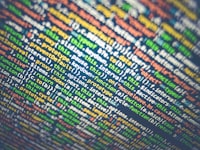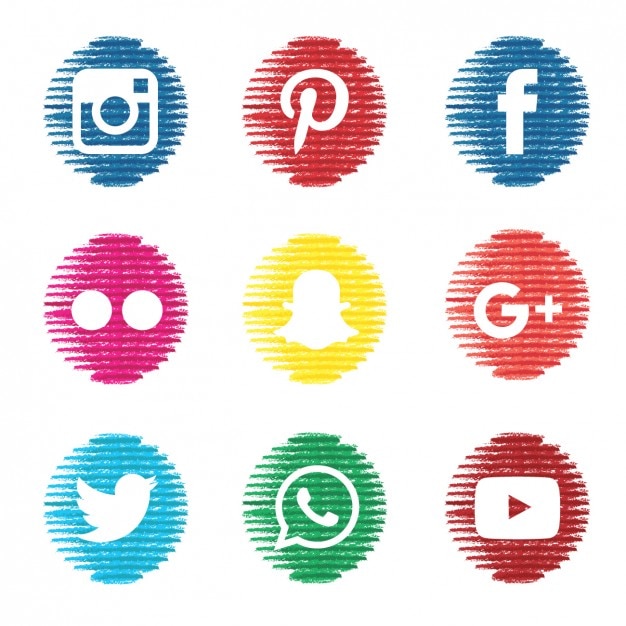
Badges. Writing-intensive. Active learning. Blended learning.
Oh, my.
These have been the buzzwords that have permeated professional conversations over the past few years, and have guided my path in developing the seminar course for Honors students that I am currently teaching, “Our Digital Selves.”
Offered as a course for a group of 22 freshmen while they are concurrently enrolled in a larger course that orients over 100 students to life in CMU’s Honors Program, my course meets twice a week, Mondays and Wednesdays, for an hour and fifteen minutes.
In describing the course, I begin with the following:
Without question, we live, work, and play in a digital world.
Though a divide still exists in terms of skills and access across demographics, it is reasonable to argue that the increasing ubiquity of mobile devices connected to the Internet as well as broadband in our homes, schools, libraries, and workplaces means that all of us – especially young people coming of age in the present moment – are now blending our personal, professional, and practical digital identities across multiple networks and with a variety of tools.
However, the ability to upload a picture or post on one’s timeline does not, in and of itself, assure us each a place in digital segments of academia, the workplace, or civic life. In fact, a recent Rasmussen College survey showed that 37% of millennial students see the internet as “scary” and are not confident in their digital literacy skills.
This first year seminar will challenge students to critically examine what it means to lead a digital life – personally and academically – and to rethink our understanding of what it means to be mindful, productive, and responsible users of technology.
And, as I have shared with students, those are a precious few minutes together each week in which we are trying to accomplish many goals.
As part of their undergraduate program, the course is helping them think about the social structures that undergird the Internet. What does it mean for us to lead a digital life? What spaces do we interact in, what tools do we use, and how do we represent ourselves with a variety of identities? How can we interrogate our own digital living and learning practices, discover new strategies and tools, and emerge with a better sense of our personal and professional goals as they relate to using technology? In conjunction with their Honors orientation course, my course, too, is aimed at helping them become better readers, writers, and thinkers. We are looking closely at the ACRL Framework for Information Literacy as part of this process.
As a writing intensive course, our goal is to use writing in a variety of ways, for different purposes, and to expand to new audiences. This includes writing-to-learn activities in class (polls, quick writes, guided writing in lessons, exit slips) and they are writing about their research in many informal ways (“writing to explore” essay, “immerse yourself in research” essay). It also includes some atypical forms of academic writing. Rather that producing “typical” final essays for their projects, I am asking them to engage in digital writing or — as Renee Hobbs, author of the textbook we are using, Create to Learn, would say — digital authorship. Engaged in a recursive process of reading, writing, researching, revising, and collaboration, students are producing videos, podcasts, interactive maps, and other forms of multimedia in an effort to think about the affordances and constraints of text, images, video, and other forms of media. I am asking them to move beyond words on the page, and they generally seem to be enjoying that process, though it has not been without some technical frustrations.
We are also exploring the use of microcredentialling in lieu of traditional grading practices. have adapted a “badging pathway” system from a Dr. Stephanie West-Puckett at the University of Rhode Island. We completed our first pathway, the Digital ID Narrative, together in the month of September. In October, they have been working in small groups on their own choice of pathways. I provide them feedback on their writing and work at each “level” of learning, and finally decided on using Badgr (the new for issuing badges using Mozilla’s Open Badge framework). That, too, has been a learning process for the students and for me. As we close in on our first “Teach In,” scheduled to happen next week, and I am looking forward to seeing what they produce and, subsequently, issuing the next round of badges to them.
Lastly, our class meets in one of CMU’s active learning classrooms. Each day, I aim to do something that gets them moving and talking with others outside of their “normal” groups (there is no seating chart). This has been a mix of things as simple as “stand up and find someone from another table to discuss X” to using playing cards to randomize the groups. I’ve been trying to encourage them to use the active learning stations and display their own computer screens while working on projects, but not too many of them are doing that on a regular, non-prompted basis. It is a large space, suited for about 80 students. I am fortunate to teach a small group of 22, but that presents some challenges, too, as the space seems quite spread out and distant for a group that size. Having smaller, more intimate conversations, then, sometimes feels awkward, though having plenty of room to move around and interact is certainly a blessing (compared to other classrooms I have been in on campus).
All of this has led, as with most teaching innovations and changes, to some success and some frustration. On the positive side of the ledger, I have been impressed with the ways that most students oriented their mindset to the pathways and the non-graded aspects of the course. Though I have tried, over the years, a number of different forms of contract grading and self-evaluation, I have not ever thrown grades out completely. And, yes, at the end of the semester will require some accountability, as their work from the many pathways and class activities will accumulate and (through reflection and dialogue with each student), a final grade will emerge. That said, many of them seem interested in the idea of microcredentialling and having the badge as a way to document their learning.
Also, on the positive side, most groups and individual students seem highly engaged with their work right now. Two groups are on the “Maker” pathway and are exploring the relatively inexpensive craft of making tie blankets. This has led them, however, into a much deeper exploration of the textile industry and the ways in which that global marketplace has significant consequences on the lives of millions, especially in third world countries. Another group is exploring their “writing lives,” and have been engaged in a conversations with other faculty about what it means to be a college-level writer. Another Adventurer group is exploring the role of campus myths and legends, creating an interactive story map of CMU’s campus. Other groups are still puzzling through their topics, and we are working to narrow their focus, which (of course) is all part of the process I hope that they would go through.
The blended learning piece will come soon, as the month of November will bring at least one, if not two or maybe even three virtual course sessions. I will have them meet using Zoom video conferencing software, which I imagine will be a new experience for most. During those sessions, I will ask them to engage in small group conversation and use tools for synchronous collaboration, probably starting with something straight-forward like Google Docs. I’m still thinking through exactly what that might look like in the weeks to come.
So, at this midpoint of the semester, how would I evaluate my own performance as a teacher? Probably an A for effort, but a B for execution. I’ve put in the time before and after class to create engaging activities, online and off, and I feel that I have established pretty good relationships with individual students. Also, the activities in class — and the individual learning pathways — have been moving forward in a progressive, scaffolded manner… for most students. And, that’s where the B comes in. I need to figure out a way to make things more focused. Obviously, my approach here is not working for everyone and while I can’t expect that any teaching method will be perfect for every student, I don’t want three or four students to leave the course with a very negative experience, even if the rest of it is positive.
To that end, I am trying to think through what I might do in the month of November to be more focused, as an instructor, and to help my students be more focused, too. Next week, I will have teaching and learning consultants from CMU’s Center for Excellence in Teaching and Learning come to observe me teach and, at the end of class, talk with my students and provide a survey for feedback (without me in the room). I am very curious to hear what they are thinking, objectively, about the course and to make appropriate adjustments in the month of November.

This work is licensed under a Creative Commons Attribution-NonCommercial-ShareAlike 4.0 International License.










